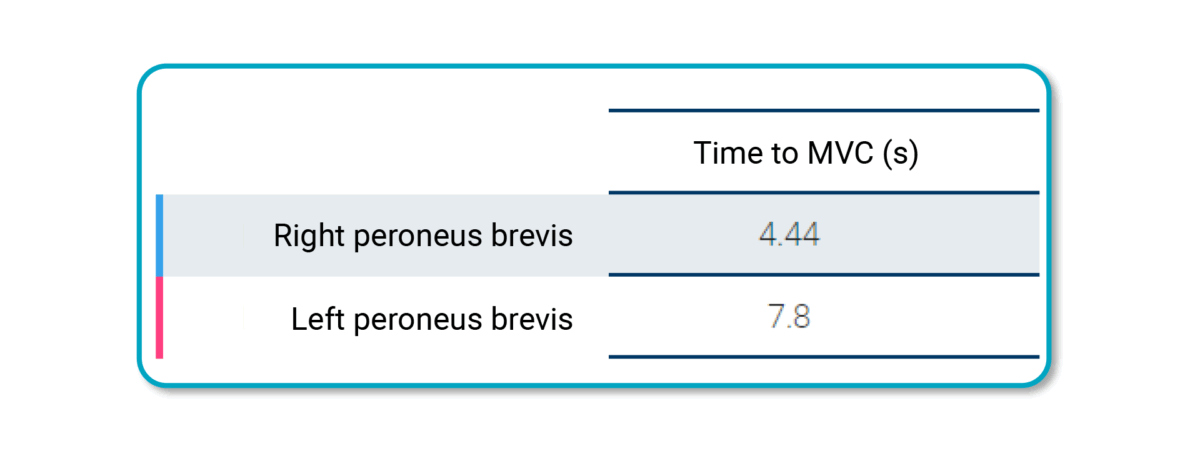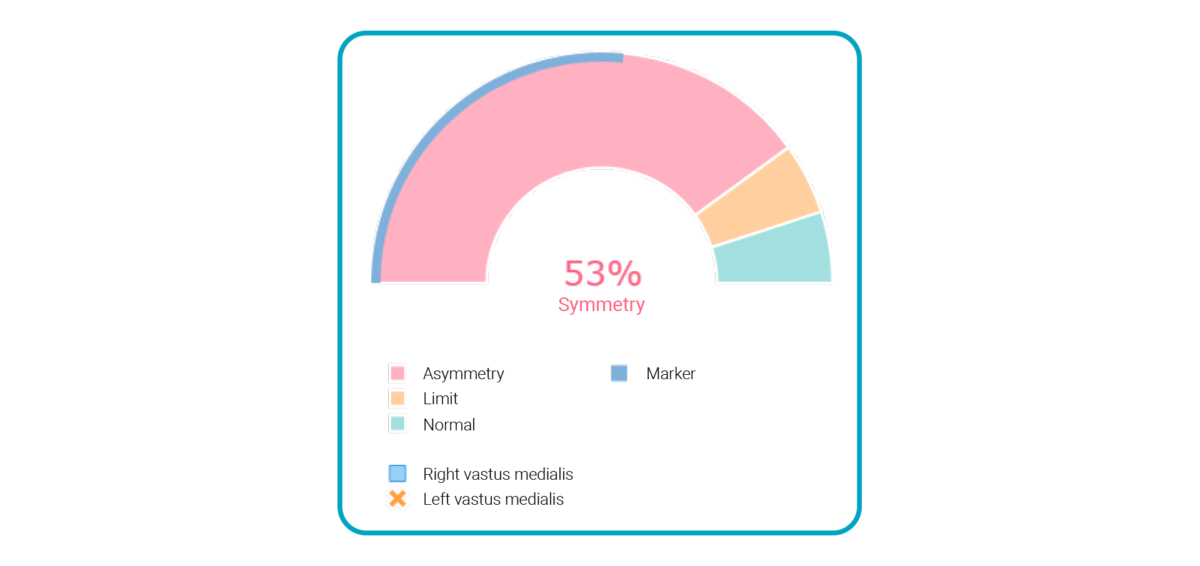When you first start working with surface electromyography (EMG), it’s easy to feel overwhelmed by the data and graphs.
But if I had to start from scratch, there are five key neuromuscular concepts I’d focus on to truly understand how to apply this technology in clinical practice.
These principles not only help you interpret muscle activity more accurately—they also allow you to make better treatment decisions.
To make them easier to integrate, each one is explained with real-life case examples.
By the way, want to get the full details on mDurance and its purchase options?
Click here to get all the information on how mDurance technology can support you.
In this post, you’ll learn 5 neuromuscular concepts that will help you better understand your patients’ pathologies—and how to address them with greater confidence.
1. Excess Muscle Tone at Rest
One of the first dysfunction signs you can detect with EMG is excessive muscle activation at rest—when the muscle should be relaxed.
Real case:

A patient shows baseline activity in the lower trapezius that is 12 times higher than normal.
This excess tone may be linked to a protective mechanism due to pain or a compensatory pattern caused by posture. If left unaddressed, it can limit mobility and cause persistent discomfort.
Findings like this can completely change the way you approach your patients.
2. Muscle Compensation
Another common phenomenon is muscle compensation, where one muscle works harder than it should to make up for the deficit of another during movement.
Real case:

A patient activates the left upper trapezius twice as much as the right during a shoulder movement. The issue isn’t just using one side more—it’s that the compensation results in poorer mechanical performance.
Identifying compensation allows you to redirect the effort to the correct muscle, preventing faulty patterns from becoming ingrained over time.
3. Muscle Deficit
A lack of muscle activation is one of the most expected—and revealing—findings when using EMG. It occurs when a muscle works less than it should during movement.
Real case:

In the same case mentioned above, the patient activates the left deltoid only half as much as the right on the injured shoulder.
This difference isn’t visible to the naked eye but clearly explains the lack of strength, mobility, stability, and the observed compensations.
By detecting these deficits, you can tailor exercises to restore specific muscle function and objectively track improvements.
4. Delayed Muscle Response
Not all muscle dysfunctions are due to weak activation. Sometimes the issue is a delayed response.
Real case:

In this patient, the left peroneus brevis takes almost twice as long as the right to reach peak contraction.
Even though the final force is similar, the slower response can affect stability and motor control during walking or sports .
This type of alteration often goes unnoticed without EMG and is crucial in patients with instability, recurrent sprains, or poor reaction to balance challenges.
5. Muscle Symmetry
Muscle symmetry is a valuable indicator when analyzing bilateral movements. Under normal conditions, we expect relatively balanced activation between sides—unless dysfunction is present.
Real case:

During a squat, a patient’s vastus medialis shows only 53% symmetry.
This difference may be due to pain, prior surgery, or motor control deficits, and should be addressed to prevent future injuries or more serious functional imbalances.EMG helps quantify this asymmetry and track its progress with precision.
Final Thoughts
Before applying any of these concepts in your practice, ask yourself these three key questions:
- – How many of my patients might have one of these motor alterations?
- – At what point in the assessment process can I integrate this EMG analysis?
- – Do my patients feel more confident when I show them this objective data?
Learning to recognize these patterns with the help of EMG allows you to go beyond clinical observation, personalize treatments, and achieve faster, longer-lasting results.
Want to go deeper into how to apply these concepts with EMG in your daily practice?
Click here to discover how mDurance technology can support you.
See you in next post 🙂

